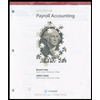Dana Rand owns a catering company that prepares banquets and parties for both individual and business functions throughout the year. Rand’s business is seasonal, with a heavy schedule during the summer months and the year-end holidays and a light schedule at other times. During peak periods, there are extra costs; however, even during nonpeak periods Rand must work more to cover her expenses. One of the major events Rand’s customers request is a cocktail party. She offers a standard cocktail party and has developed the following cost structure on a per-person basis. Food and beverages $15 Labor (.5hr.@ $10 per hour) 5 Overhead (.5hr. @ $14 per hour) 7 Total cost per person $27 When bidding on cocktail parties, Rand adds a 15 percent markup to this cost structure as a profit margin. Rand is quite certain about her estimates of the prime costs but is not as comfortable with the overhead estimate. This estimate was based on the actual data for the past 12 months presented in the following table. These data indicate that overhead expenses vary with the direct-labor hours expended. The $14 estimate was determined by dividing total overhead expended for the 12 months ($805,000) by total labor hours (57,600) and rounding to the nearest dollar. Month Labor Hours Overhead Expenses January 2,500 55,000 February 2,800 59,000 March 3,000 60,000 April 4,200 64,000 Mayo 4,500 67,000 June 5,500 71,000 July 6,500 74,000 August 7,500 77,000 September 7,000 75,000 October 4,500 68,000 November 3,100 62,000 December 6,500 73,000 Total 57,600 $805,000 "Rand recently attended a meeting of the local chamber of commerce and heard a business consultant discuss regression analysis and its business applications. After the meeting, Rand decided to do a regression analysis of the overhead data she had collected. The following results were obtained. Intercept (a) .......................................................................................48,000 Coefficient (b) ....................................................................................4 4.What other factors should Dana Rand consider in developing the bid price for the cocktail party?"
Dana Rand owns a catering company that prepares banquets and parties for both individual and business functions throughout the year. Rand’s business is seasonal, with a heavy schedule during the summer months and the year-end holidays and a light schedule at other times. During peak periods, there are extra costs; however, even during nonpeak periods Rand must work more to cover her expenses. One of the major events Rand’s customers request is a cocktail party. She offers a standard cocktail party and has developed the following cost structure on a per-person basis.
|
Food and beverages |
$15 |
|
Labor (.5hr.@ $10 per hour) |
5 |
|
Overhead (.5hr. @ $14 per hour) |
7 |
|
Total cost per person |
$27 |
When bidding on cocktail parties, Rand adds a 15 percent markup to this cost structure as a profit margin. Rand is quite certain about her estimates of the prime costs but is not as comfortable with the overhead estimate. This estimate was based on the actual data for the past 12 months presented in the following table. These data indicate that overhead expenses vary with the direct-labor hours expended. The $14 estimate was determined by dividing total overhead expended for the 12 months ($805,000) by total labor hours (57,600) and rounding to the nearest dollar.
|
Month |
Labor Hours |
Overhead Expenses |
|
January |
2,500 |
55,000 |
|
February |
2,800 |
59,000 |
|
March |
3,000 |
60,000 |
|
April |
4,200 |
64,000 |
|
Mayo |
4,500 |
67,000 |
|
June |
5,500 |
71,000 |
|
July |
6,500 |
74,000 |
|
August |
7,500 |
77,000 |
|
September |
7,000 |
75,000 |
|
October |
4,500 |
68,000 |
|
November |
3,100 |
62,000 |
|
December |
6,500 |
73,000 |
|
Total |
57,600 |
$805,000 |
"Rand recently attended a meeting of the local chamber of commerce and heard a business consultant discuss regression analysis and its business applications. After the meeting, Rand decided to do a regression analysis of the overhead data she had collected. The following results were obtained.
Intercept (a) .......................................................................................48,000
Coefficient (b) ....................................................................................4
4.What other factors should Dana Rand consider in developing the bid price for the cocktail party?"
Trending now
This is a popular solution!
Step by step
Solved in 2 steps









